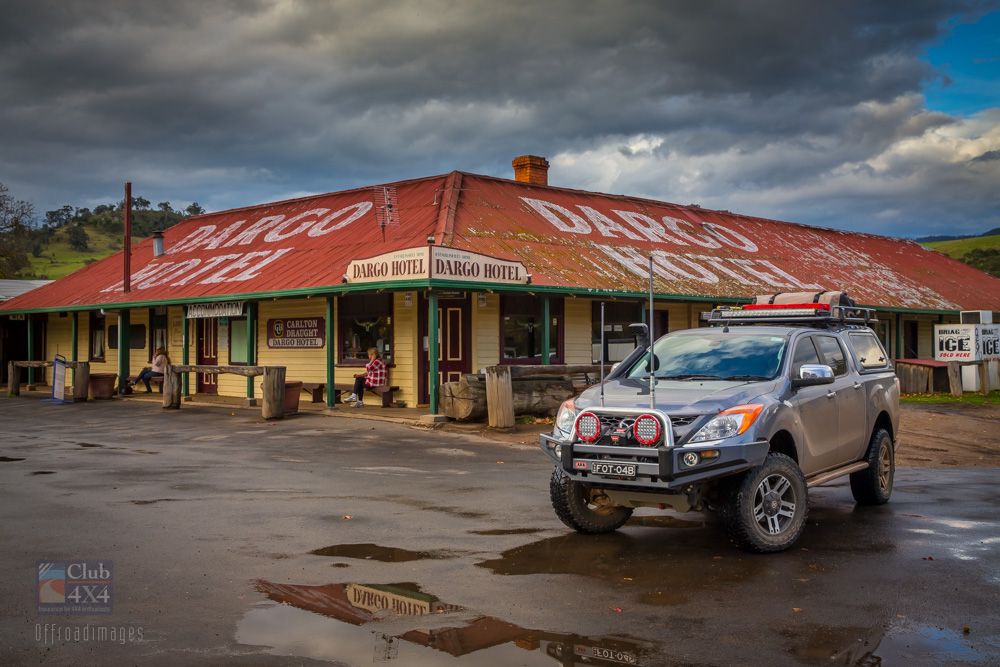While on a photoshoot for ARB in Tasmania, we had some incredibly harsh weather come in, with gusts over 40 knots blowing rain sideways and pushing the ocean hard against the shore. This weather pushed up the seas, smashing the coast with huge waves. Weather like this obviously changes the plans on a photoshoot, but this is why we head to areas like Tasmania. We are looking for all sorts of conditions and today, we were getting everything thrown at us.
To take advantage of these conditions, I spotted an outcrop of granite and started thinking of the style of imagery to suit ARB’s 200 series LandCruiser with the wild seas in the background. Our camera vehicle at the time was a Mazda BT-50 with all the fruit, and whilst it served us well, today would be the day that I accept the fact that we need an updated camera vehicle to better fit our purpose.

Without a spotter, I crawled the BT-50 across the rough terrain of slippery rock. I fully understood that I was taking the vehicle further than it was built to travel, but I needed this shot… So, with lockers on and in low range, I edged it further through the undulating terrain.
It was never built for this style of work and just didn’t have enough ground clearance. Given the circumstances, we did well, but unfortunately bumped the underside a few times – a good test for the underbody vehicle protection we had installed. Once we’d made it to the other side, I jumped out with a handheld radio and started guiding the driver of ARB Hobart’s pride and joy… their brand new 200 series; the pressure was on! I needed to get the vehicle into position without any scratches, otherwise Rod from ARB Hobart would not be impressed.
In these extremely wet conditions, I packed heaps of rocks to fill holes across the line I had planned. With the focus of the driver following my radio directions, we managed to position the vehicle exactly where I wanted it for the shot, without a mark on it!
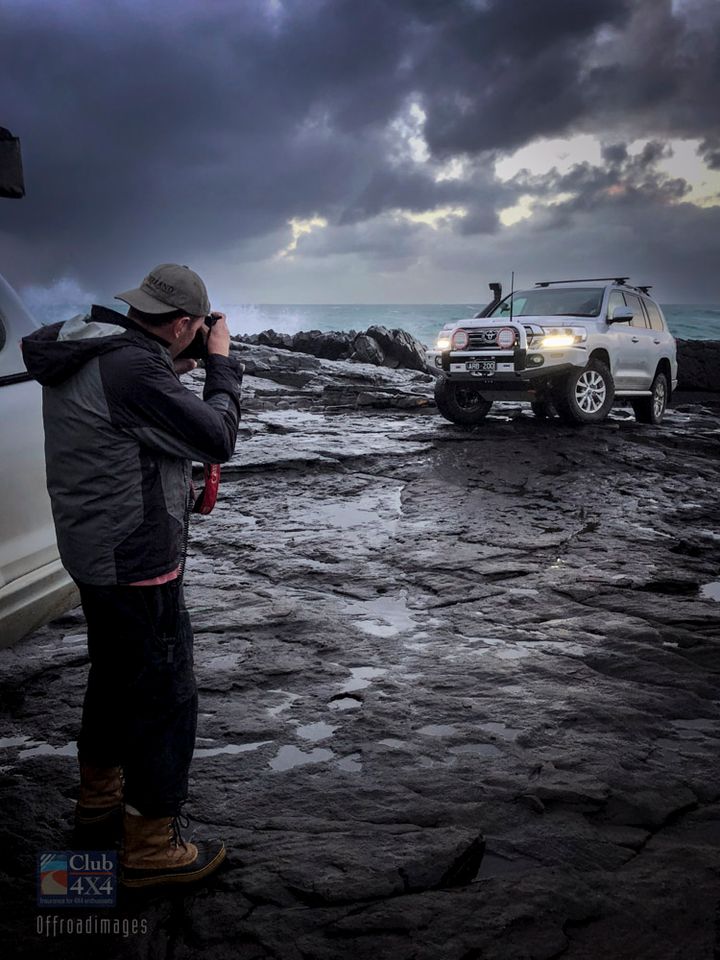
The shoot was crazy!
Hiding behind the rear of our BT-50, I would look around the corner of its canopy and wait for a big set to come in. It would hit the shoreline and explode in the background of the ‘Cruiser.
The results were worth the effort! ARB used the hero shot in many of their flagship stores, printed well over 5 meters in length and proudly on display.
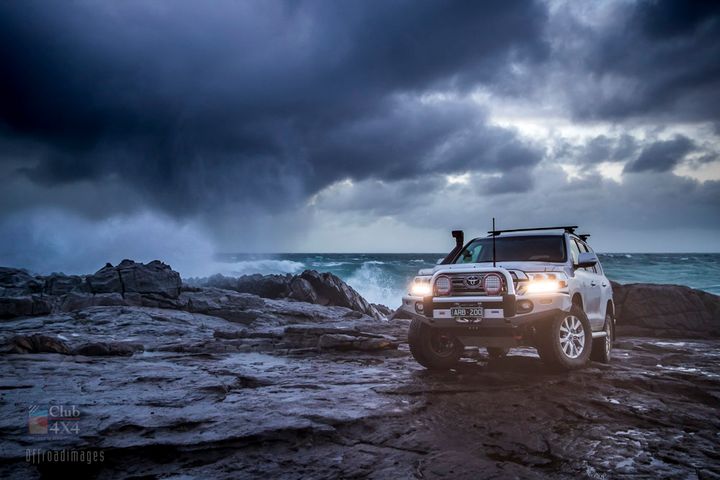
As a 4WD photographer, this is what we do and why we go to places like this. We chase all kinds of weather to help us capture images that you can relate to. We want you to think, wow, my 4X4 could look that good… and…. I really need that set-up so we can go to places like this. We make the most of every situation available to us and these images don’t just happen; there is a lot of planning involved.
But my BT-50 was always a compromise when being used on photoshoots in rough terrain. It was great, but we needed to be better. We needed a vehicle that will get our cameras to the spot where we will be shooting without a struggle, and then to be able to work out of it easily to serve as a camera vehicle while catering for the crew. Doing this out of the canopy of the BT worked, using the tailgate and drawer systems, but it wasn’t the best solution.
Always trying to do better, I had been planning this for a long time.
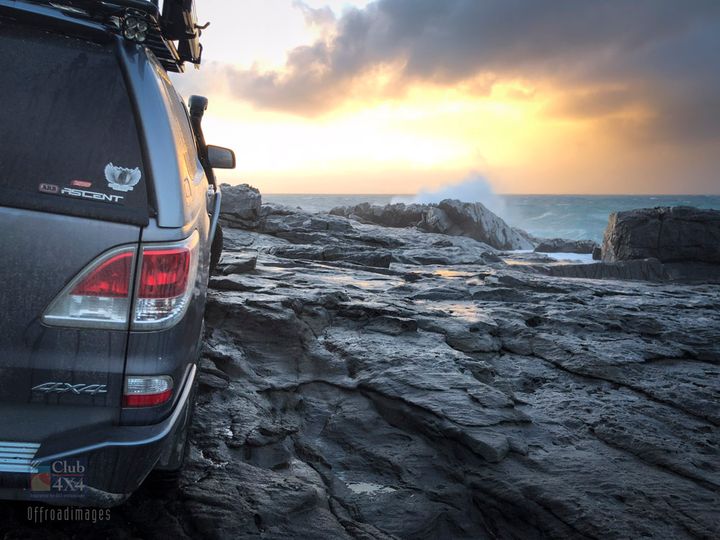
We needed to create the ultimate camera vehicle.
I talk about it a lot… Australia has some amazing 4X4 accessory companies out there. I had spoken to all sorts of product designers about what we needed in chasing the ultimate solution to allow us to service our clients better.
But on this day, Gab and I agreed that it was time.

I called the different 4X4 businesses and told them of my plan to build one capable 4X4 and started a detailed series of spreadsheets. The build project plan, equipment lists, electrical requirements etc. We went right into the detail, all the way down to the weights of every element being added and where that weight would sit.
With a photoshoot being planned across the Simpson Desert, taking in the Madigan Line, I figured we now have a deadline for building this new rig. Yep, take on the biggest build we have been part of and then drive it through one of the most remote regions in Australia… that makes sense! With support from teams with the best quality products available in Australia combined with expert mechanical and electrical, I was up for the challenge.
One of the best things about a 4WD is that you can customize it to make it your own. Everyone has a different requirement and with the help of these accessory companies, you can bring your dreams into reality to fit your budget and personal requirements.

It could be as simple as creating a 4X4 with a style or look that sets you apart from others like this awesome Defender built by the team at Adventure Merchants. You might want to tow a boat, tow a caravan, build a weekender, that dream beach fishing rig or maybe the ultimate big lap tourer.
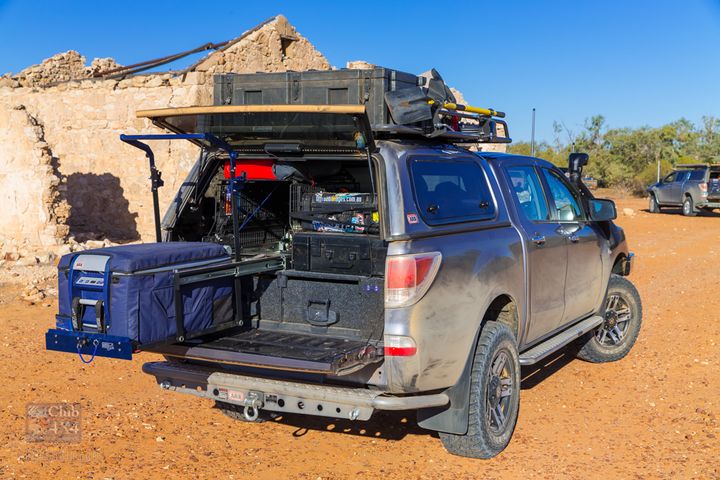
Whatever you are going to do, planning will make things much easier, and it starts before you buy your 4X4. You may know somebody who bought the wrong vehicle for their intended purpose. With a 4X4, it’s extremely easy to get things wrong and end up pumping heaps of time and money into making it something it probably will never be.
Your vehicle purchase decision should be based around what will get the job done. For example, if you need to tow a ‘van weighing 4,000 kg, you simply can’t do this with most 4X4s on the market, so you will need to do your homework to get the right shortlist of vehicles that can do the job, and start from there. Another obvious example is buying a wagon when you maybe need to buy a bale of hay every week and don’t want to tow a trailer, when a utility vehicle would be the obvious choice.
Now I know these are obvious examples, but you will be surprised at how many people get the vehicle choice wrong, only to buy and build another vehicle months later that will do the job better now that they’ve got a clear idea of what they’re trying to achieve.
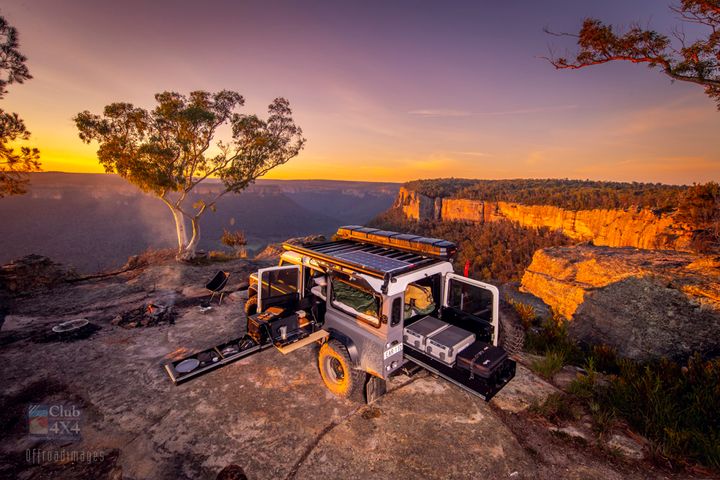
Once you settle on the vehicle, the next job thinking through the roles it needs to fulfil and setting it up to suit. There are so many things to think about and hopefully, your planning will help you in making the right choice. But, while you are planning, it’s probably best not to decide on a vehicle until you figure out the following.
How much is in your budget?
What will you be carrying?
Where will it need to go?
And for some people, how long will you be travelling in remote regions?
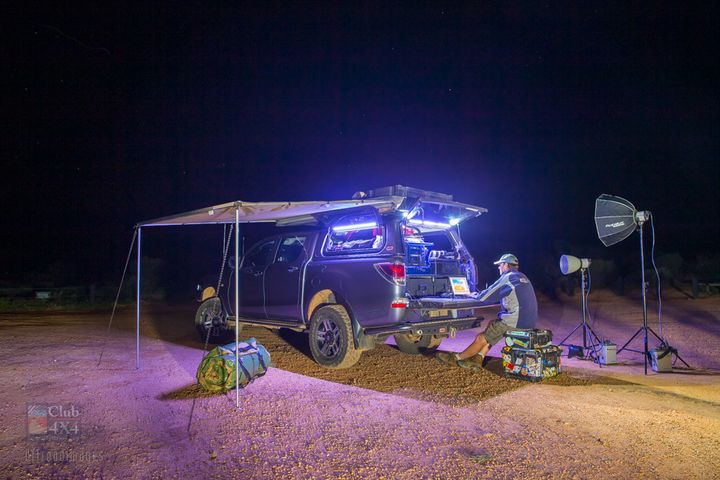
Budget should always be a top consideration. There are always ways of fine tuning a build to make it fit, and there’s no point building a beast of a 4X4 if you then can’t afford to take it on the adventures it’s built for! You might even like to break the build into a couple of stages to help you digest your purchases.
The next thing consideration is what you will be carrying. Imagine creating an amazing build only to discover that you cannot fit the gear you need to travel with. This might be a reason to reconsider your vehicle purchase.
You should consider the weight your gear will add to your 4X4 and if a Gross Vehicle Mass (GVM) upgrade is a possible solution. If going down this path, it’s easiest to do pre-registration. I have seen some people fully kit out a 200 series LandCruiser, plan a big trip towing a ‘van, only to discover that after they’ve loaded their vehicle ready to go, they exceeded the GVM and couldn’t go ahead with their trip without making some serious modifications.
If you’re considering aftermarket suspension, you may want to read my previous article on the topic. If you’re not sure about what some of the technical terms like GVM refer to, Club 4X4 have a handy guide on that too.
Anyway, once you’ve thought about budget, and gear/load on the vehicle, the next thing to ask yourself is where do you want the vehicle to go? Having an idea about future trips and bucket list destinations will make it easier for you to figure out the tyres, suspension and protective equipment needed.
It might be obvious to some people, but having the right gear for the destination is critical. If you are looking at staying off-grid for an extended time, you’ll need to figure out the battery and solar gear combination to keep your appliances running when camped off-grid.
Now start writing things down. Things of importance, what items are the “must haves” and what items are “maybes”.

In our situation, our primary target was to carry cameras into remote regions, with gear that is organised so that we can be more effective on shoot days. With this comes the requirement for storage of gear in safe locations, whilst staying easy to access. Along with this, we need to be able to charge cameras, lighting systems, camera monitors, drone batteries and the list goes on.
Now all this gear weighs something, so we created a spreadsheet of weights and figured out what the vehicle will approximately weigh before we were to build it. We were also able to create an idea of axle weights based on where the gear would sit within the vehicle. Every accessory has a weight under its specifications, so it really is easy to do. You will be surprised at how quickly things add up though!
This information is handy to pass over to whoever does your suspension upgrades, as they can ensure you are investing in the right suspension from the start and avoid the need to upgrade springs later.
The electrical system is another extremely important solution, well at least it was for me. I sat with one of the lead team members of REDARC and figured out the right batteries, charging gear, including solar, and inverter to perform the tasks needed. This meant we needed to look at the technical specifications of battery charging blocks for our camera equipment and get some accurate information.
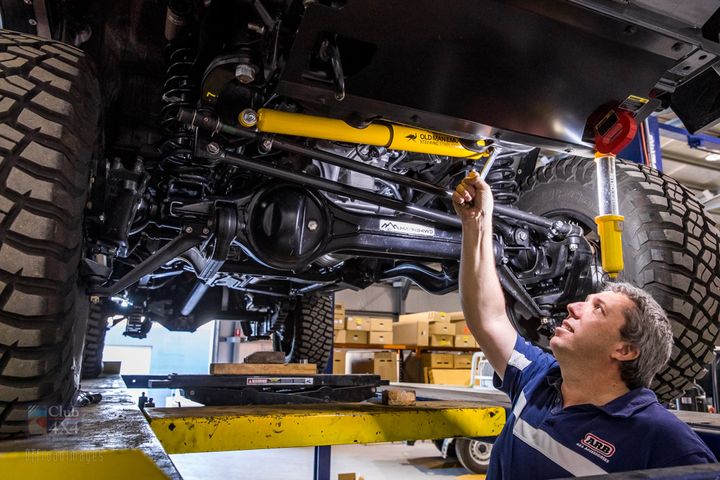
Working with the right 4X4 accessory shop will make a world of difference to the success of your build. Equally important though is being able to give them a clear idea of what you want out of your rig and how you plan to use it so that you can both agree on the right solution for your needs. Plus, they’ll be stoked that you’ve already done your own research!
And remember – planning is the key to success!
Some businesses book their workshops out weeks in advance, so be sure to prepare a plan of where the vehicle will go and when so that you can minimize the days of it sitting around unfinished. Once you do have bookings in place, it doesn’t hurt to call the businesses a week out and ensure you are still locked in their schedule.
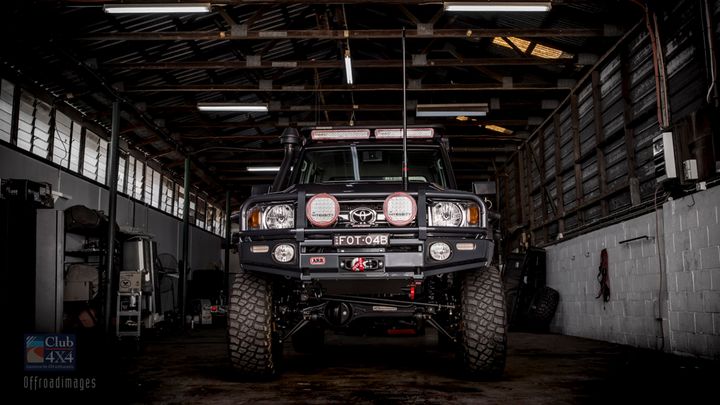
We built our “The Mighty 79” in 7 weeks across three different states of Australia. It took a lot of planning and was difficult, but with the help of many, we made it happen.
I think building your dream 4X4 is such an important thing to get right, so you should put everything you can into making this build exactly what you want it to be.
“Cheers”
-Michael Ellem Offroad Images
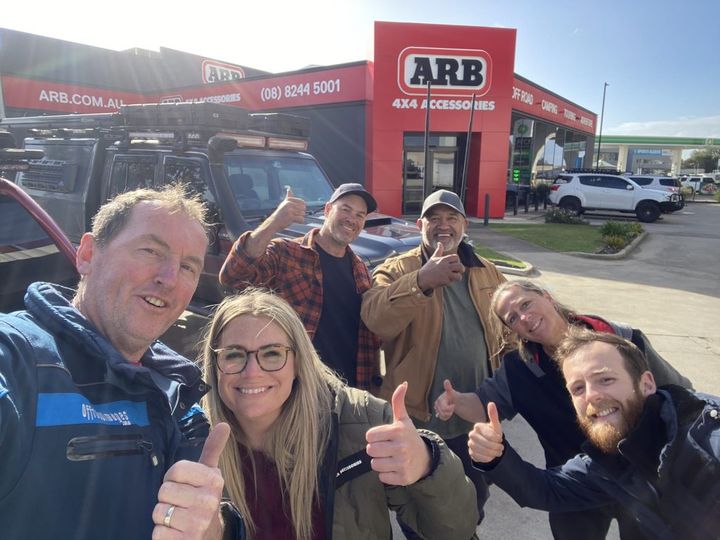
The Campfire – Feedback
Just like sitting around the campfire, we would love to hear what you have to say.
You can be involved simply by entering your comments below.
Also… we will be featuring stories about photography tips and tricks, 4X4 preparation, build planning and maintenance, as well as featuring inspirational locations for you to visit in your 4X4. So please get involved and let us know what you’d like to hear about.
If you have any requests for stories to be featured in campfire or would like to provide feedback about this article, please send us a message on our social links…
Instagram: @offroadimages Facebook: @offroadimages YouTube: https://www.youtube.com/OffroadImages Website: http://www.offroadimages.com.au
As 4X4 enthusiasts who live for the opportunity to create awesome imagery anywhere in Australia, we know that our vehicle assets are covered wherever we travel to create that shot, as we are insured by Club 4X4.


